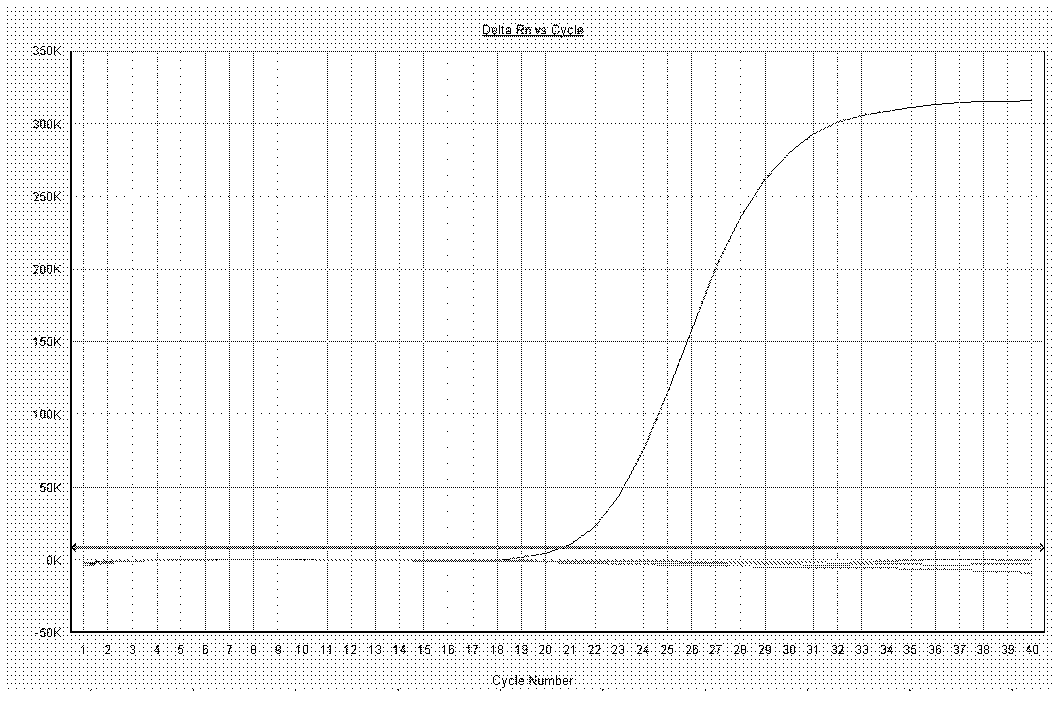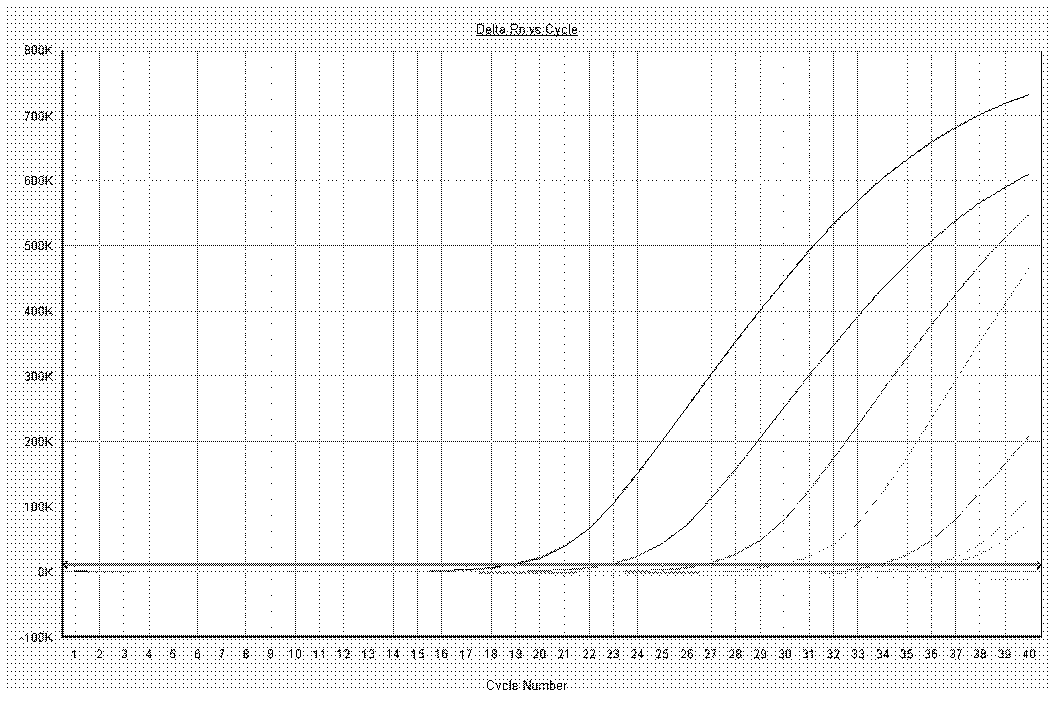Primer and probe for fluorescent RT-PCR (reverse transcription-polymerase chain reaction) assay of peste des petits ruminant vaccine strain viruses
A technology of RT-PCR and Peste des petits ruminants, which is applied in the direction of fluorescence/phosphorescence, biochemical equipment and methods, and microbial measurement/inspection, can solve the problems of difficult virus detection of Peste des petits ruminants vaccine strains, and improve inspection efficiency, Reliable results and reduced testing costs
- Summary
- Abstract
- Description
- Claims
- Application Information
AI Technical Summary
Problems solved by technology
Method used
Image
Examples
Embodiment 1
[0040] (1) Preparation of the template to be tested
[0041] Method 1: Use a commercial RNA extraction kit and follow the instructions.
[0042] Method 2. Extraction method with Trizol nucleic acid extraction reagent:
[0043] a. Take the cell culture solution of Peste des petits ruminants virus, after inactivation, centrifuge at 12000rpm to remove macromolecular impurities. Add 100 μL of supernatant to a 1.5ml centrifuge tube, then add 300 μL of Trizol tissue extract to it, and oscillate fully on a shaker. Then centrifuge at 12000rpm for 15min, and transfer the supernatant to a 1.5ml centrifuge tube;
[0044] b. Add 400 μL of pre-cooled isopropanol to the supernatant, shake fully on the shaker, and centrifuge at 12,000 rpm for 10 minutes to obtain RNA precipitation;
[0045] c. Pour off the supernatant carefully, add 600 μL of 75% ethanol, and wash by hand upside down several times. (Note: Do not shake vigorously to prevent RNA fragmentation and difficulty in re-precipita...
Embodiment 2
[0053] Specificity test of the real-time fluorescent RT-PCR method for the vaccine strain of Peste des petits ruminants:
[0054] In the 25 μ L reaction system, add the nucleic acid of foot-and-mouth disease virus (FMDV), vesicular stomatitis virus (VSV), bluetongue virus (BTV) and Peste des petits ruminants wild strain simultaneously as template, use specific primer of the present invention and Probe carries out real-time fluorescent RT-PCR detection, and the result only has the specific amplification curve of Peste des petits ruminants vaccine strain, and the nucleic acid of FMDV, VSV, BTV and PPRV wild strain has no amplification curve, confirms that the present invention is aimed at PPRV vaccine strain Virus primers and probes have good specificity ( figure 2 ).
Embodiment 3
[0056] Sensitivity test of real-time fluorescent RT-PCR method for PPR vaccine strain virus:
[0057] In the 25 μ L reaction system, after extracting the nucleic acid of the Peste des petits ruminants vaccine strain virus to measure the concentration, make eight 10-fold serial dilutions, and perform real-time fluorescent RT-PCR detection to obtain a dilution gradient series amplification curve ( image 3 ), it was found that the lowest dilution that could be detected was 10 -5 , corresponding to a concentration of 1.38 pg / μL RNA.
[0058] The detection by the present invention is easy and quick to operate, generally can be completed in about 3 hours, and the result can be detected in real time during the detection process, without the need for electrophoresis observation of amplified products, avoiding the contamination between amplified products and electrophoretic observation When EB pollutes the environment.
PUM
 Login to View More
Login to View More Abstract
Description
Claims
Application Information
 Login to View More
Login to View More - R&D
- Intellectual Property
- Life Sciences
- Materials
- Tech Scout
- Unparalleled Data Quality
- Higher Quality Content
- 60% Fewer Hallucinations
Browse by: Latest US Patents, China's latest patents, Technical Efficacy Thesaurus, Application Domain, Technology Topic, Popular Technical Reports.
© 2025 PatSnap. All rights reserved.Legal|Privacy policy|Modern Slavery Act Transparency Statement|Sitemap|About US| Contact US: help@patsnap.com



